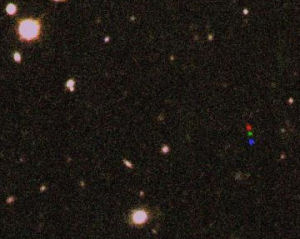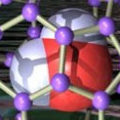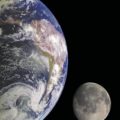
Galileo knew he had discovered a new planet in 1613, 234 years before its official discovery date, according to a controversial new theory by a University of Melbourne physicist. Professor David Jamieson contends that buried in Galileo’s notebook notations is evidence that he discovered the planet we now know as Neptune. Jamieson’s hypothesis has been published in the journalAustralian Physics.
In his paper, Jamieson notes that Galileo was observing the moons of Jupiter in the years 1612 and 1613. Over several nights the Italian astronomer also recorded the position of a nearby star which does not appear in any modern star catalogue. “Computer simulations show the precision of his observations revealing that Neptune would have looked just like a faint star almost exactly where Galileo observed it,” Jamieson says.
But a planet is different to a star because planets orbit the Sun and move through the sky relative to the stars. It is remarkable that on the night of January 28 in 1613 Galileo noted that the “star” we now know is the planet Neptune appeared to have moved relative to an actual nearby star.”
There is also a mysterious unlabeled black dot in his earlier observations of January 6, 1613, which is in the right position to be Neptune. “I believe this dot could reveal he went back in his notes to record where he saw Neptune earlier when it was even closer to Jupiter but had not previously attracted his attention because of its unremarkable star-like appearance,” Jamieson explains.
“Galileo may indeed have formed the hypothesis that he had seen a new planet which had moved right across the field of view during his observations of Jupiter over the month of January 1613,” Jamieson says. “If this is correct Galileo observed Neptune 234 years before its official discovery.”
But there could be an even more interesting possibility still buried in Galileo’s notes and letters. “Galileo was in the habit of sending a scrambled sentence, an anagram, to his colleagues to establish his priority for the sensational discoveries he made with his new telescope. He did this when he discovered the phases of Venus and the rings of Saturn. So perhaps somewhere he wrote an as-yet undecoded anagram that reveals he knew he discovered a new planet,” Jamieson speculates.
Related:
The Origin of the Solar System: Buffy Slays a Theory
Astronomers Get Gnarly Over Planetary Definitions
More from the University of Melbourne


















Comments are closed.